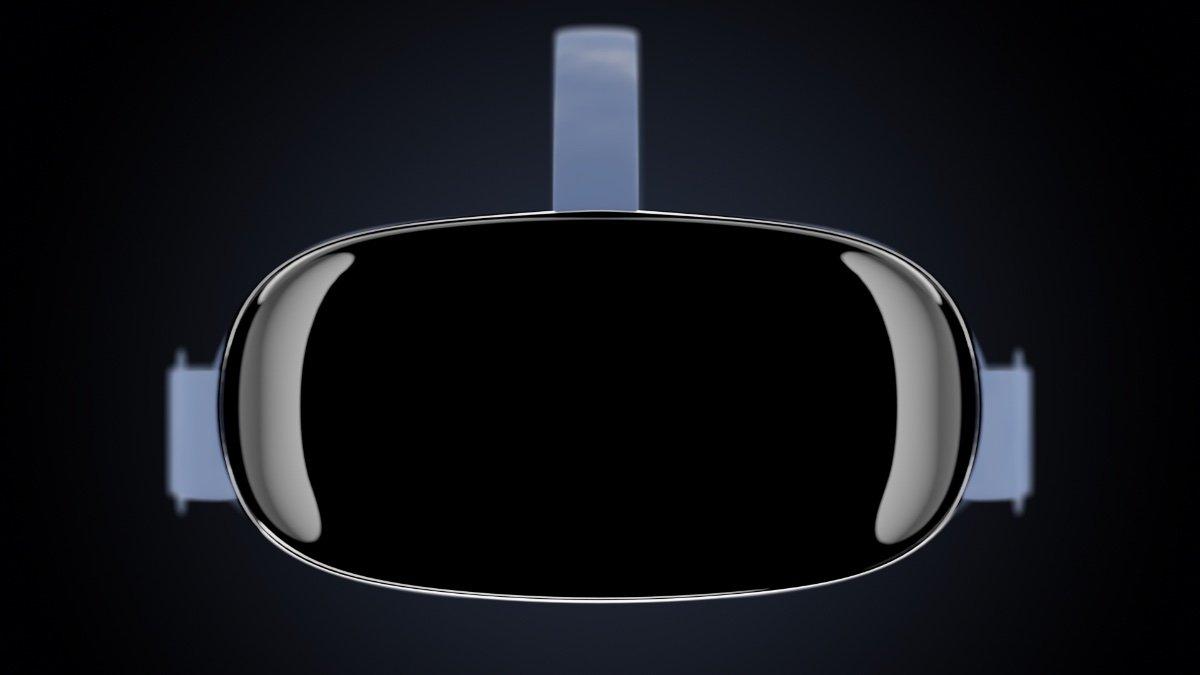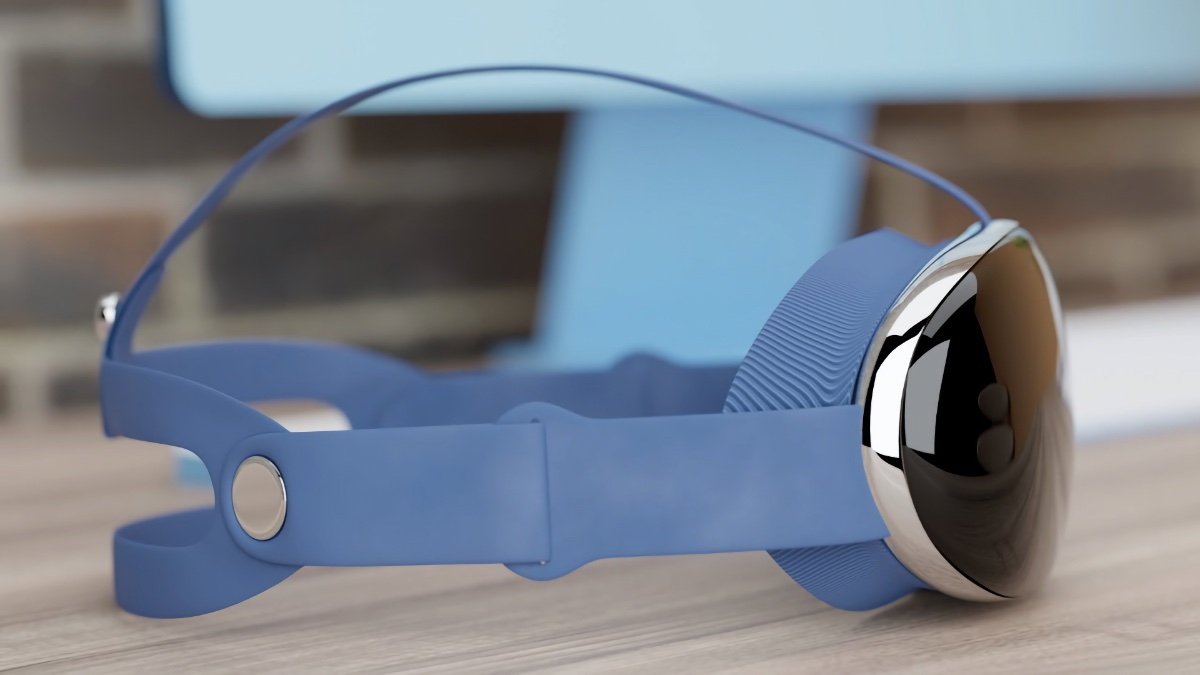Despite suppliers hitting significant production roadblocks with curved components, Apple's headset is still rumored for a WWDC reveal with mass production later in 2023.
Apple's upcoming WWDC 2023 conference is anticipated to revolve around Apple's headset, a VR or AR device that might become available to the public several months after the event. A new report from The Information sheds some light into the production issues that Apple has encountered with the device.
Apple's headset is the most intricate hardware creation to date for the company, primarily due to its unique curved design, slim profile, and remarkably lightweight nature. Unfortunately, these features contribute to its anticipated high price, estimated to be around $3,000, which could strain the budget of potential buyers.
Internal digital renderings of the device reveal a curved glass display encased in a sleek aluminum frame that appears slightly thicker than an iPhone. The device's design posed significant manufacturing challenges, necessitating the creation of a curved motherboard — an unprecedented development for Apple — to fit within the headset's curved exterior shell.
Apple's industrial design team, responsible for the aesthetic aspects of their devices, insisted that the front of the headset be crafted from a slender, curved glass panel to bestow a high-end look and premium experience. As a result, over a dozen cameras and sensors behind the glass needed to be discreetly concealed for aesthetic reasons.
However, the glass distorts the images captured by the cameras, potentially causing discomfort and nausea for the wearer if not adequately compensated. Additionally, solutions had to be devised to accommodate the lenses and displays within the device's slender frame.
To reinforce the headset's interior without adding excessive weight, Apple opted to utilize carbon fiber, a composite material commonly found in aircraft and sporting goods, as revealed by multiple individuals involved in the project.
Design and other difficulties
Based on earlier device drawings, users will find a small dial positioned above the right eye, enabling them to switch between augmented and virtual reality. Above the left eye, a power button is located.
A circular connector, resembling an Apple Watch charging puck, is attached to the left temple of the headset, with a cable running down to a battery pack worn on the waist. For enhanced comfort, a soft and detachable face cover is affixed to the rear of the headset.
The headset headband appears predominantly made of soft materials and is connected to two short and rigid temples that house the left and right speakers.
Throughout the development phase, Apple engineers faced challenges in finding the right balance between the thickness, weight, and durability of the front-facing glass on the headset. The curved design of the glass increases its vulnerability to shattering compared to the flat glass screen of the iPhone.
Engineers also expressed concerns about users in VR mode accidentally colliding with walls or furniture, potentially resulting in the headset's front glass fragmentation and posing a risk of facial cuts.
Apple also aims for the headset to be compatible with various facial shapes. As the development progressed, Apple employees engaged in discussions regarding the necessity of additional eye-tracking cameras or adjustments to the motorized lenses.
These considerations aimed to cater to a small percentage of the population with uncommonly-shaped eyes or noses. However, Apple may have addressed and resolved these concerns during development.
Switching manufacturers
Apple faced a challenge when switching manufacturers for the headset, but it ensured a smooth transition by continuing the product's development at the exact location with the same engineers. The headset production occurs in a single facility in Kunshan, an eastern Chinese city.
Interestingly, this location was previously used to develop Apple's AirPower wireless charging mat, which was ultimately canceled due to persistent overheating issues after being announced for 18 months.
Luxshare, an emerging Chinese manufacturer, took over the headset assembly from Apple's previous partner, Pegatron, in 2022. Pegatron had been involved in the project for over four years but lost interest due to its significant manufacturing challenges, making mass production financially unviable for the supplier.
However, according to a source familiar with the matter, a procurement employee at Apple has expressed optimism about the potential success of the headset. Drawing a comparison to the AirPods, which experienced significant growth in shipments each year from 2017 to 2020, the employee suggested that the headset could follow a similar trajectory, which falls in line with a CIRP report in May.
 Andrew Orr
Andrew Orr








-m.jpg)






 Marko Zivkovic
Marko Zivkovic
 Christine McKee
Christine McKee

 Andrew O'Hara
Andrew O'Hara
 William Gallagher
William Gallagher

 Mike Wuerthele
Mike Wuerthele
 Bon Adamson
Bon Adamson




-m.jpg)



14 Comments
If you have to wear a battery pack on your boy, th ether to the device by a wire, sorry. Fail.
Forget the remote battery pack which is a negative. The $3K price tag is going to mean a big fail. Who is this market for? There is no way in hell I'm going to spend that kind of money on this thing. If few people buy it, the apps just won't be developed for this thing and it'll fail. It's the whole Chicken and the Egg. Without apps for it that people want to actually spend that kind of money, people won't buy it. But if people don't buy it, the app market will never become a thing.
If this thing was $1K, maybe,.. but at $3K, no way!!!
I'm skeptical that any of these reports on design and features of this rumored device are either current or accurate. We may find out shortly, but I'd bet that the image above will bear little resemblance to any actual Apple device released to the public. I mean, why would the company that makes AirPods build wearable goggles that include clunky speakers on a head strap? If you want immersive audio to go with your AR/VR, you're not going to use head strap speakers, you're going to use AirPods that play the spatial audio directly into your head through your ear holes. Further along these lines, would a company that introduced an iPhone that depended on regularly connecting to a Mac, and a watch that was initially highly dependent on a connection to an iPhone develop a clunky $3,000 device seemingly made to operate independently of every other device that Apple makes?
I'm betting that whatever it is, it will be slimmer, smaller, and less expensive than suggested here, and will rely on (and be enhanced by) integration with existing devices like AirPods for audio and an iPhone or Mac for computational power. The more functions it can offload, the smaller and lighter it can be. I'm betting that even the thing about the external battery pack is either nonexistent or an optional add-on, or, surprise, the thing described here is simply a MagSafe connector that uses the same charger as the Apple Watch to charge the device, with no expectation that you'll walk around with a wire hanging off of your left temple.
OK, I get the repeated comments about a $3K price tag but my first Apple computer (an LC2 with a monitor) that I purchased in 1991 cost $2,700 with an educational discount. Outside of some used Macs, every Mac I have purchased has been more expensive than $2K by the time I add upgrades.
In the days of $1000 Taylor Swift tickets, an entry level product for developers that costs $3K is not out of bounds. Or how about dysfunctional $15K autopilots?
Who remembers the debut of the AppleWatch that had a gold edition for $10,000? Fast forward to now and the Apple Watch has been revised from a fashion accessory to a must have health and fitness accessory and the best version is an AppleWatch Ultra that can be had for $700-800.
Considering the purported complexity of the device, doubling the price of a high end iPhone Max Pro is not out of bounds.